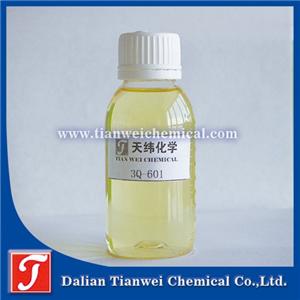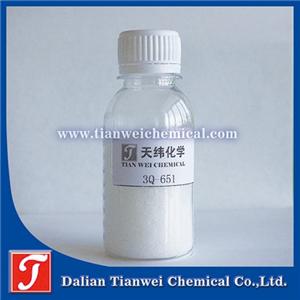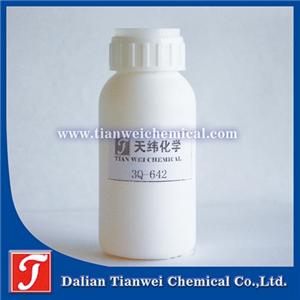The role and implementation methods of adding antibacterial agents in additive manufacturing
Adding antibacterial agents in additive manufacturing (3D printing) can significantly enhance the functionality and safety of printed products, especially in fields with strict hygiene requirements such as medical care, food packaging, and public health, where it holds significant application value. The following is a detailed analysis of the core role of antibacterial agents in additive manufacturing and their specific application scenarios:
I. The Core Role of Antibacterial Agents
Inhibit the growth and reproduction of microorganisms
Antibacterial agents directly kill or inhibit the activity of bacteria, fungi and other microorganisms by destroying the cell walls of bacteria, interfering with metabolic processes or inhibiting DNA replication. For example:
Nano-silver: It releases silver ions to penetrate the cell membrane and combine with sulfur groups in proteins, leading to the death of bacteria.
Nano zinc oxide: It generates hydrogen peroxide through photocatalysis, oxidizes the structure of bacterial cells, and simultaneously releases zinc ions to interfere with enzyme activity.
Quaternary ammonium salts: Adsorbed on the surface of bacteria, they damage the integrity of cell membranes and cause leakage of contents.
Prevent cross-infection
In the medical field, the surfaces of 3D-printed implants, surgical instruments or prosthetic limbs are prone to becoming breeding grounds for bacteria. Adding antibacterial agents can form a sustained antibacterial barrier and reduce the risk of postoperative infection. For example:
Orthopedic implants: The surface of 3D-printed titanium alloy bone screws is loaded with an antibacterial coating, which can inhibit the adhesion of drug-resistant bacteria such as Staphylococcus aureus.
Respiratory tract stents: Stents printed with antibacterial PLA material can reduce complications of pulmonary infection.
Extend the service life of the product
Antibacterial agents can inhibit material degradation caused by microorganisms (such as biological corrosion), and extend the service life of 3D printed products in damp or polluted environments. For example:
Marine equipment: The sensor housing printed with antibacterial ABS material can resist algae adhesion and maintain the performance of the equipment.
Food packaging: Antibacterial PET material printed food preservation boxes can delay food spoilage and reduce packaging waste.
Enhance user safety and comfort
In consumer-grade products, antibacterial agents can enhance user experience, especially suitable for scenarios with frequent contact or prone to contamination. For example:
Children's toys: Toys printed with antibacterial TPU material can reduce the risk of intestinal infections caused by biting in children.
Public facilities: Subway handrails and door handles printed with antibacterial nylon materials can reduce the spread of pathogens.
Ii. Implementation Methods of Antibacterial Agents in Additive Manufacturing
Direct blending method
The antibacterial agent powder is uniformly mixed with 3D printing resins (such as PLA, ABS, PCL), and antibacterial products are directly printed through fused deposition Modeling (FDM) or stereolithography (SLA) processes.
Advantages: Simple process, low cost, suitable for large-scale production.
Challenges: Issues such as the dispersibility of antibacterial agents, compatibility with resins, and thermal stability during the printing process need to be addressed.
Surface coating method
Spray or immerse antibacterial solutions (such as coatings containing silver nanoparticles) on the surface of 3D printed products to form an antibacterial protective layer.
Advantages: It does not change the inherent properties of the material and requires a small amount of antibacterial agent.
Challenge: The adhesion, wear resistance and long-term stability of the coating need to be optimized.
In-situ synthesis method
During the 3D printing process, antibacterial components are generated inside the material through chemical reactions.
Advantages: The antibacterial agent is evenly distributed and has strong persistence.
Challenge: Precise control of reaction conditions is required, and the process complexity is high.
Iii. Typical Application Scenarios and Cases
The medical field
Personalized implants: A team from Zhejiang University has developed 3D printed bone screws loaded with ceftriaxone sodium, combined with nano-zinc oxide antibacterial masterbatch, to achieve dual protection of local antibiotic release and long-lasting antibacterial properties.
Breathing mask: The mask printed with antibacterial silicone material can inhibit the survival of viruses (such as influenza viruses) on the surface, reducing the risk of infection for medical staff.
Food packaging
Smart food storage box: The box printed with antibacterial PLA material can release trace amounts of zinc ions, inhibit the growth of foodborne pathogens such as Escherichia coli, and extend the freshness period of fruits and vegetables.
Disposable tableware: Tableware printed with antibacterial starch-based materials is degradable in the natural environment and also meets food safety standards.
Public health
Antibacterial filter: The 3D-printed air conditioning filter is loaded with nano-silver antibacterial agents, which can capture and kill bacteria and viruses in the air, improving indoor air quality.
Isolation ward facilities: Bed guardrails and call buttons printed with antibacterial ABS material can reduce the spread of infection within the hospital




